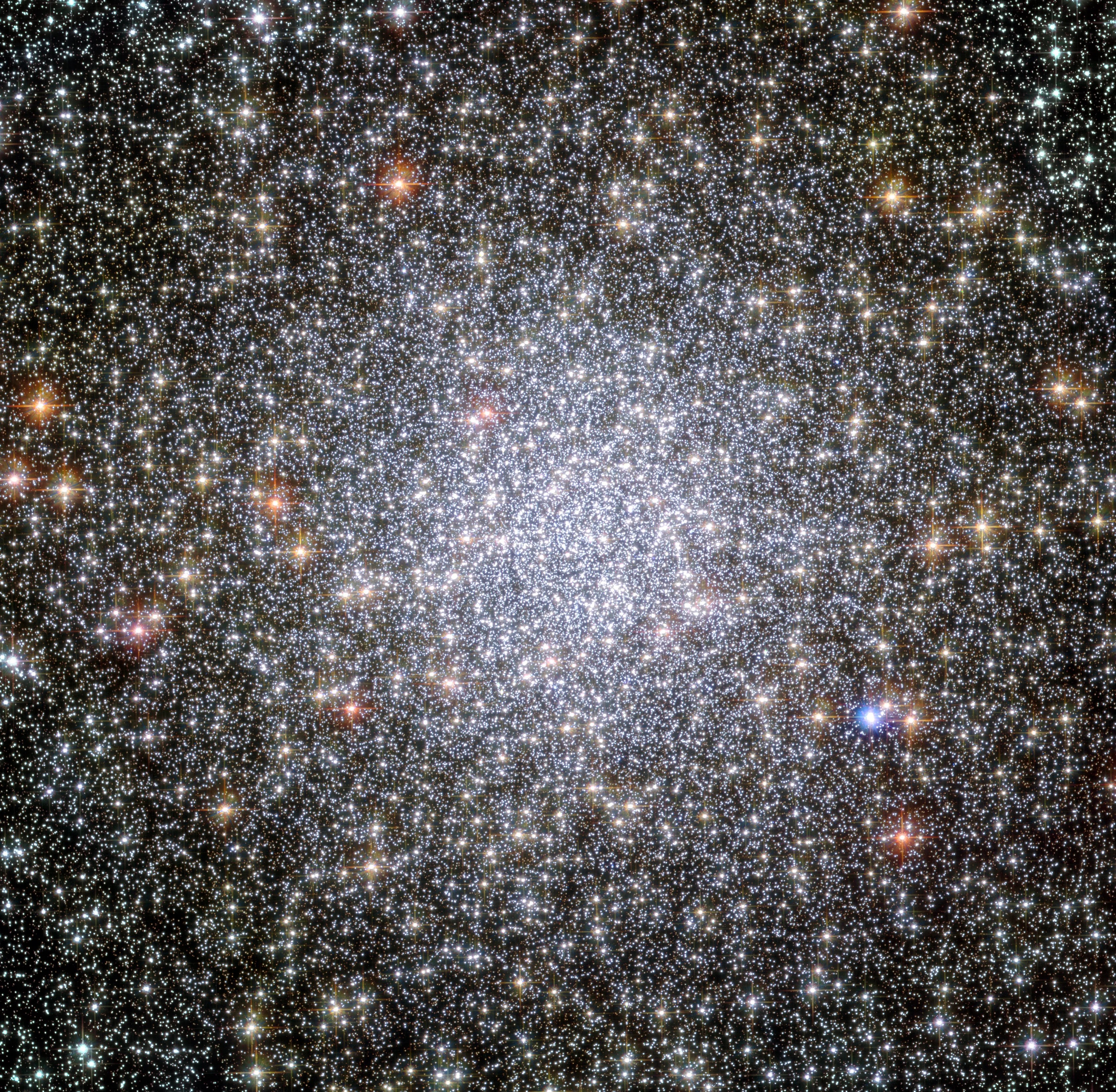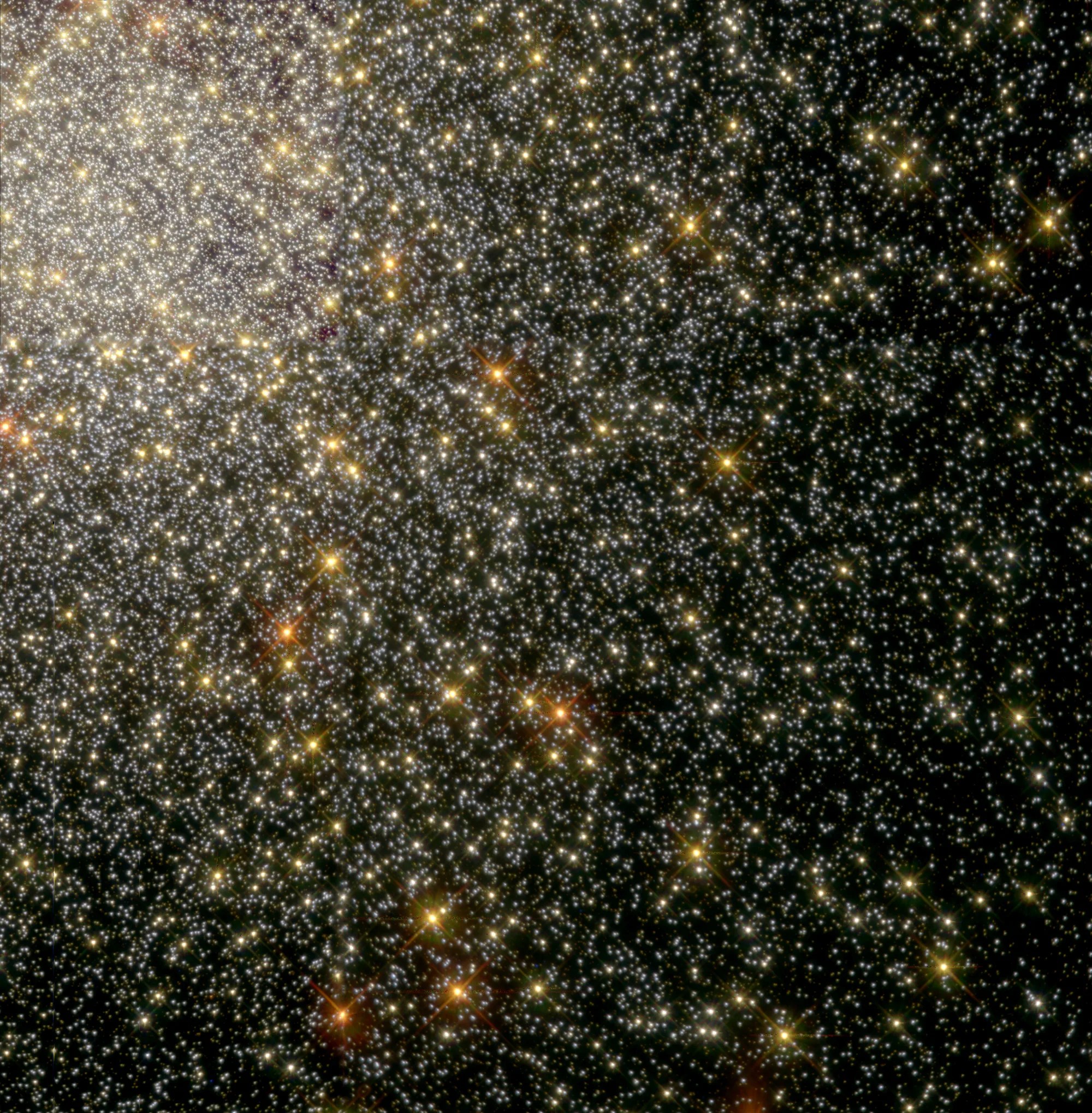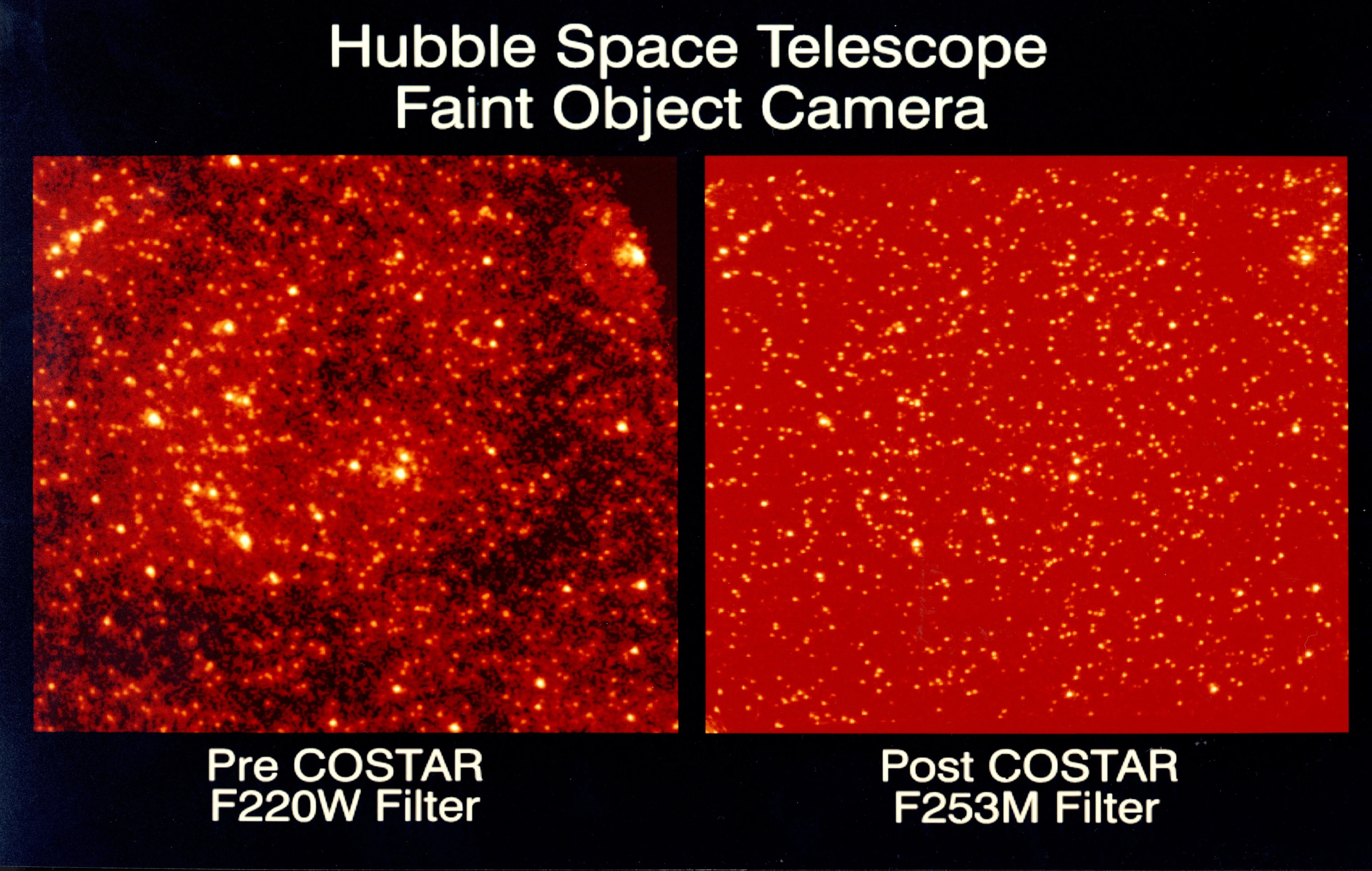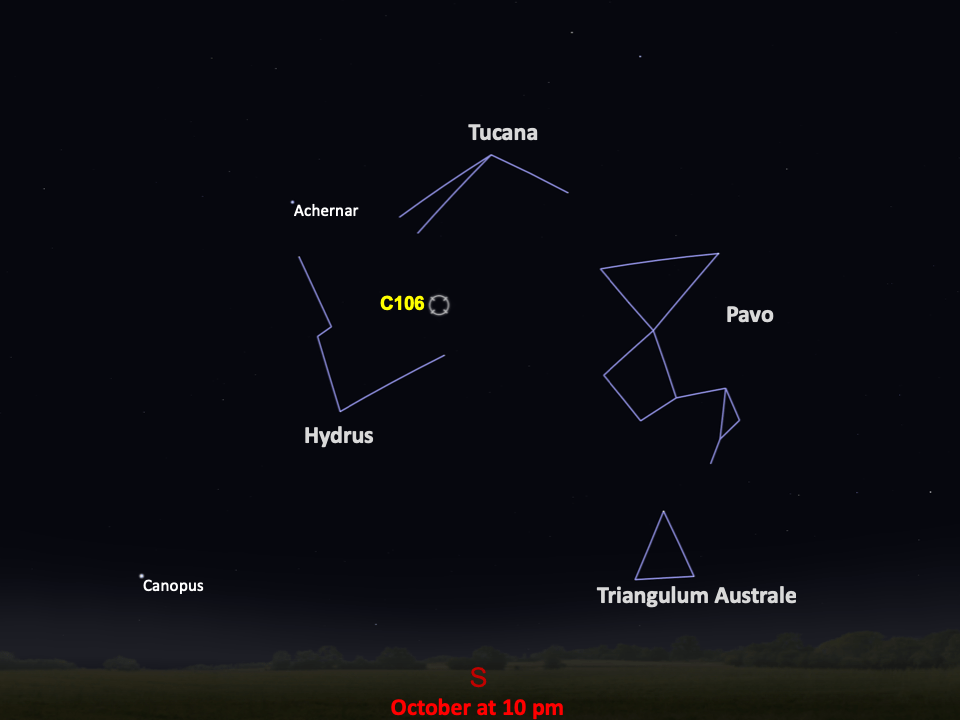Caldwell 106
Hubble observations of Caldwell 106 revealed a dynamic conveyor belt of star motion within the cluster.
Distance
16,700 light-years
Apparent Magnitude
4.0
constellation
Tucana
object type
Globular Cluster

This Hubble image of Caldwell 106 displays a glittery spray of ancient stars that are held together by their mutual gravity. Globular clusters are isolated star cities, home to hundreds of thousands of stars. And like the fast pace of cities, there's plenty of action in these stellar metropolises. The stars are in constant motion, orbiting around the cluster's center. Past observations have shown that the heaviest stars tend to crowd into the “downtown” core area, while lightweight stars reside in the less-populated suburbs.

As mid-sized stars age, they run out of hydrogen, the “fuel” they use in the nuclear process, and the star’s core collapses under its own weight. The star’s outer layers swell outward and cool, with its stellar wind blowing away much of this gas. After the purge, only the stars' bright, superhot cores, called white dwarfs, remain. This weight-loss program causes the now-lighter-weight white dwarfs to be nudged out of the downtown area through gravitational interactions with heftier stars. At each encounter, the white dwarfs' orbits begin to expand outward from the cluster's packed center.
Until these Hubble observations of Caldwell 106, astronomers had never seen this dynamic conveyor belt in action. This Hubble image, taken in visible, infrared, and ultraviolet light using the Wide Field Camera 3, reveals young white dwarfs amid their leisurely 40-million-year exodus from the bustling center of the cluster.
Also known as 47 Tucanae and NGC 104, this globular cluster is about 16,700 light-years away from Earth toward the southern constellation Tucana. Containing at least half a million stars, the cluster was discovered by astronomer Nicolas-Louis de Lacaille in 1751 and is highest above the horizon in the spring from the Southern Hemisphere. The sparkling magnitude-4 stellar collection appears near the Small Magellanic Cloud (a nearby dwarf galaxy) and is the second brightest globular cluster in the sky, visible to the naked eye under dark skies and easily viewed using a pair of binoculars.
For more information about Hubble’s observations of Caldwell 106, see:
Hubble Catches a Stellar Exodus in Action
Astronomers Ponder Lack of Planets in a Globular Cluster
Hubble Uncovers Faint Stars in the Core of Globular Cluster
Hubble Shows Link between Stars’ Ages and Their Orbits in Dense Cluster
Hubble Yields Direct Proof of Stellar Sorting in a Globular Cluster
Hubble Catches Up with a Blue Straggler Star
NASA’s Hubble Space Telescope Finds ‘Blue Straggler’ Stars in the Core of a Globular Cluster


Glossary
Globular Cluster - A spherical group of stars that are gravitationally bound to each other, with most of the stars concentrated at the cluster’s center.
Magnitude - The brightness of an astronomical object, represented by a number; bright objects have low numbers on the magnitude scale, while dim objects have high numbers.
White Dwarf - The core of a dead Sun-like star whose outer layers have been expelled into space.
Explore Hubble's Caldwell Catalog
The following pages contain some of Hubble’s best images of Caldwell objects.

Caldwell 1
Also known as NGC 188, this group of stars formed from a large cloud of gas making the stars roughly…

Caldwell 2
This shell of gas is expanding outward, away from the dying star within.

Caldwell 3
This barred spiral galaxy was first spotted by British astronomer William Herschel in April 1793 in the constellation Draco.




